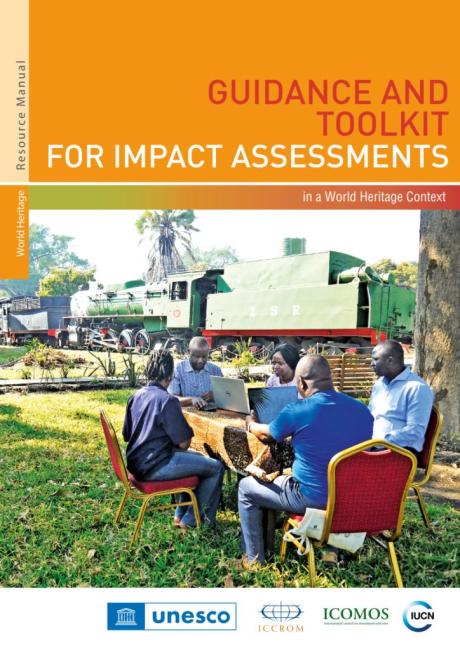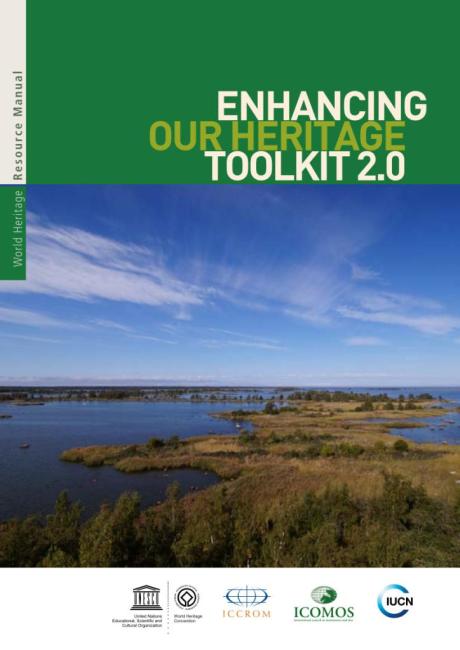Governance
- Governance is about who makes decisions, what instruments they use to do so, and what responsibilities and processes are involved in relation to the identification, protection and management, and sustainable use of the heritage place.
- Achieving effective and equitable governance and management requires coordination and collaboration among actors with rights and responsibilities over the heritage place.
- Good governance principles for heritage include aspects of legitimacy and voice, shared direction, accountability, fairness and rights.
The concept of governance has grown in importance over the past two decades and is now used widely across different sectors. In the heritage context, governance can be defined as the interactions among institutional structures, processes and traditions that determine how power and responsibilities are exercised, how decisions are taken and how different actors have their say in relation to the identification, protection and management of the heritage place.
Governance is essentially about who decides, the instruments they use to exercise their power and responsibilities, and what processes are followed for making decisions. Instruments refer to the set of documents and means such as legislations, policies, regulations, planning documents, customary rules and traditions, technical or legal contracts etc, that outline the different processes of how decisions are made and by whom. The three elements of actors, instruments, and decision-making processes can be framed as the backbone to analyse the governance arrangements for the heritage place. Paying attention to these aspects is vital to understanding how the management system for the heritage place functions. In a practical sense, it looks at the complex relationships between actors (i.e. managers,
rights-holders, and stakeholders; see 4.2), and how the quality of governance affects other critical management processes, such as planning and community engagement. To ensure that governance is rights-based, pluralistic and equitable, it is necessary to analyse existing governance arrangements and consider if any improvements are needed.
Managing heritage places and ensuring their contribution to broader sustainable development requires effective collaboration between multiple actors, sectors and decision-making levels. Whenever choices and decisions are made about the protection of a heritage place, some form of governance enables – or not – people to exercise their rights, influence, authority and responsibilities over that place. Thus, who has decision-making power, who chooses what actions to implement and what processes are followed, deeply influences how a heritage place is managed.
In the case of World Heritage All inherited assets which people value for reasons beyond mere utility. Heritage is a broad concept and includes shared legacies from the natural environment, the creations of humans and the creations and interactions between humans and nature. It encompasses built, terrestrial, freshwater and marine environments, landscapes and seascapes, biodiversity, geodiversity, collections, cultural practices, knowledge, living experiences, etc. , understanding the governance arrangements takes on particular importance. The inclusion of a property on the World Heritage All inherited assets which people value for reasons beyond mere utility. Heritage is a broad concept and includes shared legacies from the natural environment, the creations of humans and the creations and interactions between humans and nature. It encompasses built, terrestrial, freshwater and marine environments, landscapes and seascapes, biodiversity, geodiversity, collections, cultural practices, knowledge, living experiences, etc. List brings additional responsibilities and greater national and international oversight and, with it, additional monitoring procedures to assess whether the OUV of the property is being maintained. Decision-making processes for the property itself – as well as its buffer zone and wider setting – become more challenging as multiple administrative levels are involved, requiring further collaboration and coordination. In addition, to ensure that the rights, obligations and responsibilities of all actors (managers, rights-holders, and stakeholders) are recognized and respected, there is a need for platforms where people can have a say in informing and/ or making decisions about the heritage place and how those decisions will affect them.
Clearly defined and equitable governance arrangements can help align efforts and reconcile interests in relation to the identification, protection, management and sustainable use of cultural and natural heritage.
- Recognition and respect for the rights, obligations and responsibilities of all relevant actors
- Recognition and respect for all relevant actors and their knowledge, beliefs and institutions
- Full and effective participation of all relevant actors in decision-making processes
- Transparency supported by timely access to relevant information in appropriate forms
- Accountability for fulfilling responsibilities and other actions and inactions
- Access to justice, including fair and effective dispute resolution processes
- Respect for human rights, including individual and collective rights, gender equity and the free,
- prior and informed consent of Indigenous Peoples
- Ensuring benefits and costs are fairly and equitably shared among relevant actors
- Effective coordination and collaboration between actors, sectors and levels.
Source: Adapted from Governance Assessment for Protected Areas and Conserved Areas.
Achieving effective and equitable governance and management requires coordination and collaboration among actors with rights and responsibilities over the heritage place. Much more can be achieved when people work together, particularly by building stronger cross jurisdictional partnerships that can combine resources (human, financial and technical) and explore collaborative solutions to management challenges.
Effective and equitable governance arrangements will vary according to the mandate, capacity, and resources of the actors involved, if and how their role and responsibilities are recognized and respected, as well as the availability of enabling platforms and processes. The effectiveness of coordination will depend on certain conditions including:
- involvement of all those with relevant roles and responsibilities and ensuring they have the required capacity;
- mutual respect among those involved;
- an active, sustained dialogue to achieve consensus on solutions that meet, as far as possible, the concerns and interest of everyone;
- a learning culture that is open to new ideas and explores innovation.
- What are the governance arrangements at your heritage place and who are the actors involved in the management system of your heritage place?
- Does the management plan (or similar planning instrument) for the property include a description of the governance arrangements for the property and any existing buffer zone(s), and do these government arrangements correspond to the details set out in this manual?
- Is the governance structure – including the necessary interactions between different managers – clearly documented, transparent and accessible? Is it clear who has the main decision-making power (or final say) in relation to different management processes?
- Have all rights-holder groups been identified? Are the rights of each group well understood? Are all rights-holder groups engaged in the management of the property, or do some feel excluded?
- Are all rights-holders, managers and relevant stakeholders effectively and appropriately involved in different management processes?
- Have rights-holders and/or local communities been involved in the identification of the values of the property, particularly at the time when the property was nominated for the World Heritage All inherited assets which people value for reasons beyond mere utility. Heritage is a broad concept and includes shared legacies from the natural environment, the creations of humans and the creations and interactions between humans and nature. It encompasses built, terrestrial, freshwater and marine environments, landscapes and seascapes, biodiversity, geodiversity, collections, cultural practices, knowledge, living experiences, etc. List? Are free, prior and informed consent processes conducted for all decisions that affect Indigenous Peoples’ lands, territories or rights?
- Are effective dispute resolution mechanisms in place?
- BIOPAMA Programme, Convention on Biological Diversity, Germany Federal Ministry for Economic Cooperation and Development, ICCA Consortium, IUCN WCPA, IUCN Global Protected Areas Programme (2013). Governance of Protected Areas. From understanding to action, Gland (Swizerland) (Switzerland), IUCN.
- UNESCO, ICCROM, ICOMOS, IUCN (2023). Tool 4 Governance Arrangements in Enhancing Our Heritage All inherited assets which people value for reasons beyond mere utility. Heritage is a broad concept and includes shared legacies from the natural environment, the creations of humans and the creations and interactions between humans and nature. It encompasses built, terrestrial, freshwater and marine environments, landscapes and seascapes, biodiversity, geodiversity, collections, cultural practices, knowledge, living experiences, etc. Toolkit 2.0, pp. 46-56, Paris, UNESCO.



